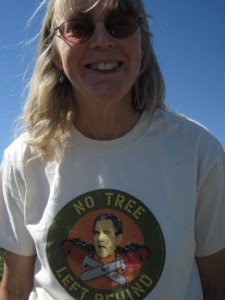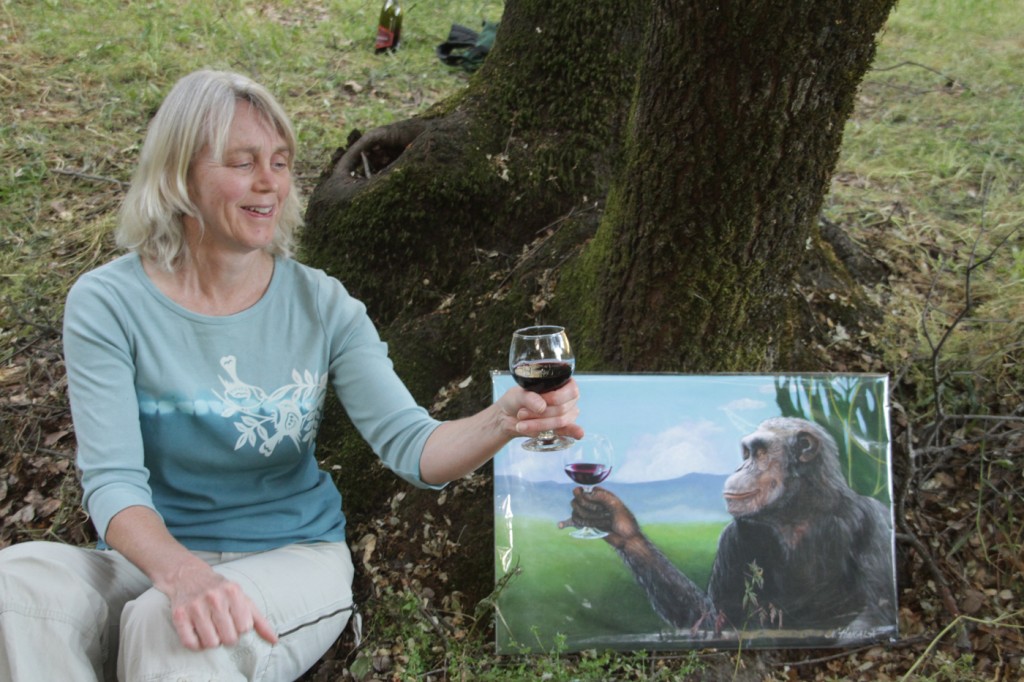Way To Go Ohio
https://youtu.be/-WXcexId5s8
She would not forget it, the big white farmhouse she explored with her brother. She remembers the day they discovered the stacks of old Life magazines by the giant stone fireplace. They sat fingering through them. How strange, this big old empty house. How wonderful. She would wind her way home down the dirt road, through the giant old white oaks. This was her playground. Her paradise. Her world.
One lovely spring day when Virginia left for elementary school, the overgrown Ohio farm with the big empty white farmhouse and the grand white oak trees lining the dirt road next to their new house was there. By the time she got home from school, it wasn’t. She was eight years old. Popping off the bus at the end of the school day, her little pod of fellow neighborhood kids stood on the new sidewalk in stunned silence as yellow monsters moved back and forth across the horizon, the rich fertile soil blowing up into the sky like a nuclear bomb; the oak trees piled-up like garbage. Later that winter, hiking through the apple orchard, ice skates dangling over her shoulders, she would reach her beloved pond only to find it bulldozed out of existence–a sign for a new hotel on top of it (the frogs she’d try to catch each summer–flattened).
She had no way of knowing that hers was the first street of what would turn out to be a sprawling, gigantic subdivision, her family conscripted into taking care of hundreds of fleeing wildlife (including a steady stream of frogs and toads). In just a few short years, she went from roaming the wild hills of Southern Ohio, to roaming the new mall where her mother got a job. There was no day care then. Per Virginia’ intellectual tendencies even at an early age, of course she ended up in Walden’s Bookstore where she would sit on the floor and look at books. The regularity of this attracted the attention of the store manager. When Virginia told her mother, her mother took her “lunch hour” (all of 20 minutes) to assure the store manager this was her kid and did she mind if her young daughter made herself at home in the science section–for hours? One working mother to another, yes, but it would be nice if it resulted in a book sale every now and then. Virginia was given a few dollars every ‘now and then’ to buy a book which delighted her to no end. Ironically, sadly, the nature books interested her the most–if she couldn’t see the real thing anymore, at least she could look at the pictures.
By the time it was all destroyed, her teen years, Virginia was an “environmentalist”–before the word even existed. This was before there were “environmental laws” and “Environmental Impact Statements”. Virginia saw this world before America developed some understanding of what it was doing to itself, and she has spent her career implementing many of these regulations–regulations that were the result of exactly the scene she observed when she was eight years old. These experiences traumatized many a little kid during this time (late 60’s) and they continue to unify many people that were alive then–and remember it.
Virginia has been a professional field biologist for over 20 years. Her field work and passion for travel (especially traveling throughout the United States as her love and fascination for her own country is never-ending) has taken her from one end of the United States to the other, including six years working in Alaska. She also enjoys exploring Europe (and would love to trace her genealogy some day).
She holds a M.S. in Plant Ecology and a B.S. in Field Biology. Her career has ranged from working as a federal and state environmental regulator, a endangered species construction monitor (and the construction guys really loved this!), to building a tree with little kids (yes, building a tree; ask). Her novel reflects actual experiences throughout her life and career. Though she attempted to return to the Midwest from whence she hailed, the high density shopping mauls’ where forests and prime farmland used to exist drove her back to the west coast, though the west coast has caught up.
Virginia considers preservation of American flora and fauna (or unique flora/fauna anywhere for that matter) the most important way to preserve American HISTORY in addition to preserving our ecology. She feels it is, in fact, the ultimate act of patriotism. American flora and fauna exist no where else in the world. The history of our nation is written in the land of our country. The experience of getting to know the land, it’s native species, rocks, soil, it’s existence as a living fabric, mosaic of life, to love it as we do one another, to love it as an act of patriotism, only to observe its complete obliteration (for a parking lot) is woven into her novel. While certainly supportive, she has always been baffled by impressive efforts to preserve historic buildings, while our native flora and fauna that occur nowhere else in the world, the result of thousands of years of evolution, are considered disposable and destroyed on a daily basis; and unlike man-made historic artifacts, native plants and wildlife provide essential ecosystem services. (Coincidentally, the protagonist in her novel, Ellie, feels the same way).
Virginia is a strong advocate of incentive-based environmental protection programs coupled with strong environmental education programs run by public agencies and schools. Many of these programs have been cut or completely eliminated across the United States. She is a strong advocate of a “nature center in every county” and as a kid was strongly influenced by the hour long road trip to the Cincinnati Nature Center (per the destruction of everything around her-they had to drive to it). There are few nature centers anymore…and very few out west. Many people know more about how their car runs than they do about how our earth operates. All species are and will pay the price for human ecological ignorance=we will take them all with us when we go extinct. Only effectively and creatively implemented regulations coupled with environmental/ecological education can offset the impacts the human species is inevitably causing to the planet.
What’s the bottom line problem? “It’s the population, stupid,” Virginia has been known to proclaim after a few beers, because even as we try to ignore it, we are killing our own planet=stupid especially when we have the potential to create something different (no, REALLY stupid) but Carl Sagan puts it more eloquently: “the tragedy of the human species is it has evolved the capacity of foresight but refuses to use it.”
Is it getting to the point where it may be too late? If so, considering we could have selected another path, this will be the true tragedy.
Virginia is available for informative and fun speaking engagements. Are you a professional agent? Check out her books and if they float your boat or may float somebody else’s, feel free to get in touch. Thank you.
(Painting below, entitled A Very Good Year, was created by Nancy Hakala of Auburn, CA).
Comments and contact form have been deactivated due to spam.
CONTACT: vaa(AT)virginiaarthurauthor(DOT)com
Influences/Favorites
Rachel Carson, Joanna Macy, John Muir, Ed Abbey (of course), Mark Twain, Vine Deloria, J.D. Salinger, Kurt Vonnegut, John Irving, Hunter S., Tom Robbins, Wendell Berry, Wallace Stegner, Carl Sagan, Theodore Roethke, E. M. Forster, D. H. Lawrence, Aldo Leopold, H.D. Thoreau, Olas & Mardie Murie, Garret Hardin, Pam Houston, Mary Austin, Barbara Ehrenreich, Erma Bombeck, Sinclair Lewis, James Thurber, Emile Zola, Carl Hiaasen, T.C. Boyle, Frank Norris, George Stewart (Earth Abides, consider it a kind of preparation manual for the future), Marc Reisner (Cadillac Desert), Derrick Jensen, Chekhov, Nietzsche, Tolstoy, Dostoevsky, J.J. Rousseau, Huxley (both), Flavonoid, Thylakoid, Carotenoid, and so many more…where to stop?
Virginia is currently working on seven novels, sometimes simultaneously.

